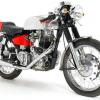Contributor Leaderboard
Popular Content
Showing content with the highest reputation on 27/10/18 in all areas
-
A very wise decision Canny Lass!!..and very nice words spoken about wor wise aad pitmen friends on heor! As you say,CL,you usually find answers to your questions,and NO [!]..we don't mind you asking aboot things that puzzle ye...that's what we aal come on heor for..ti share wa nollege wi those that haven't experienced things such as mining. Me porsinally,a tek delight in being able ti share me experiences wi folk cos when aal us aad pitmen are gone..tha'll ownly be byeuks ti refer ti. Nowt wrang wi that,ti a point,but most byeuks aav read,hev been writtin by folks wi nae REAL experience in rough conditions,daeing aad-fashined hand-filling in low seams,[a shudda sed "LAA"seams theor..but it might hae been owa much ti decipher!!]. Enywheh!...traditionally,when kids went doon the pit on the forst day,they started working at ,or near,the shaft bottom area..where coal tubs ["Chummins" i.e. ..empty ones]..were sent doon in the cage,and pushed oot thi cage by the Onsetters pushing "Fullun's"[full tubs]..INTO thi cage,at the shaft bottom,if that was where the seam was being worked,or it might be any distance doon thi shaft wherever other seams were being worked simultaneously,such as the "High Main",or the "Yard" seam..and so on. If a seam like this was being worked,we called it the "Yard Seam Inset"...etc,to denote that it wasn't actually the shaft bottom. My elder Brother ,for instance,started pit life,in 1956,on the surface,at Bedlington A pit..[Hereinafter referred to as "The AAD pit],then his first job underground was "Hingin' on",in the "Dish" at the "Harvey East Plane".[aa was 12 yrs aad on his borthdi...born same day..three years apart!] NOO!..can ye imagine the puzzlement on my fyess when he was cummin yem at neet,after he's shift,and trying ti explain ti ME...aged 12 years,wat a "Plane was?![but aa was a little bit wiser than me schoolmates aboot pitwark cos a read loads o' byeuks aboot it!] The term used at thi Aad pit was "The Engine Plane"....at Choppington B pit,[Hereinafter referred to as "The High Pit"],the term was "The Trot"...or at most pits "The Rolleyway"...all of which referred to the Rope Haulage Roadways from the shaft bottom area which hauled Chummins inbye,to the Loader-end,and simultaneously hauled Fullun's back outbye to the shaft bottom to be sent to Bank..[the surface]. Of course ,there were haulage roads aal thi way inbye reet ti thi coal face almost,but by Regulations in the Mines and Quarries Act 1954,these had to be kept a cetain distance from the actual face itself. Personell who were not "Face-trained" in all aspects of coalface work,were not allowed within 20 yards of any coalface....which was a laugh cos at age 17 yrs,us lads at the High Pit used ti tek wor materials inbye reet to thi face for the men,[Cutter cables..Face conveyor driveheads.Drillers..coal-cutters...owt that was needed],and we sometimes used ti gaan "Under the low"..[meaning actually ONTO the face!],and help the "Nyeuk" coalfiller ti cast he's coal oot and onto the conveyor belt...cos the nature of his job meant he could be five or six,or more,yards away from the "Boxend"..[the return drum end of the rubber conveyor belt]. It was highly illegal from the point of safety,but we weren't exactly dumb nuts!,it was just as rough in the miles of roadways we travelled in aal day,as it was on the face, so we were used to thi dangers,and it helped us gain a bit of face experience which primed us up for wor actual Face-Training". But back ti thi "Rope Boy"..[or "Haulage Boy"]..so me older Brother,stood in a dip in the shaft bottom area roadway,which was called "he Dish"..Chummins came rattling doon inti thi dish four at a time,[each cage carried four tubs -two tubs in each deck..in thi double-decked cages],and his job was ti couple thi tubs together with the attached "Chynes"..[Chains].. and "Yeuks"..[Hooks]..inti "Sets"..[GANGS".."GANGING"...??]...of a "Score"..[Twenty tubs in a set]....and "Hing"..[Hang].. them onto thi haulage rope ..which was continuously moving about four miles an hour..[and which was fast underground in confined spaces!],using "Hambones"..special heavy steel clips with about five feet of pretty thick heavy chain and a big"Sheckle"..[Shackle.."C-shaped to fit into thi middle "Cock-hole" on the tub]. I have explained in depth about the crude terminology elsewhere in this topic,so won't go into it here!. As soon as thi hambone was slung onto thi moving rope,it "Clicked" the set of twenty tubs away instantly..no gradual pick-up of speed...you had to hing thi hambone onti the rope and jump back to safety from between the rolleyway rails.It often happened where lads slipped and got either their feet injured by being run over by the set,or at the very least a hand injury..if you didn't get your hand crushed severely while coupling the tubs on as they bumped into each other in the dish![which happened often!]. NOO!...here's what puzzles me a bit...'cos a "Rope Boy"could also refer to an apprentice rope-splicer,which was usually one of the tasks of the Rolleywaymen,but not aalwis..cos at Bates Pit,thi "Ropemen" were dedicated to exactly that..repairing or replacing haulage ropes..or even doing rope extensions..which involved cutting the rope and anchoring it,splicing a predetermined length of new rope into the loop,then moving the "Sheave"..[Return Wheel]..further inbye to be nearer to the face as the face was advancing....then tensioning the rope up to operating standards . "JOTTIES"..My guess would be they are referring to vehicles other than coal tubs..flat trams for instance,used for loading coalcutters or other machinery onto,or,as was thi case at thi Aad pit,"Mary-Janes"..which were flat trams with wooden panelled sides all around to hold timber props and planks,or long cutter cables etc. At thi High Pit,we had "Three-barred-trams",which were small bogies or trams,with three vertical steel bars on each side with a top rail connecting them for rigidity. At Bates Pit,they had trams with three sides called " Betties". I suppose every pit had it's own terminology for all the different operations and gear which they used. As I mentioned earlier,"Ganging"..may have been an old term for "Sets" of vehicles underground.[like nowt ti dae wi "Gangers"..which refers to men in charge of a gang of workmen in other industries..but not in wor coal industry..that aa ever knew of! "Panel Gates"..where coal is extracted using "Bord and Pillar" methods,pits like Lynemouth,and Ellington,referred to the areas of coal they were working ,as "Panels",and "Gates" referred to roadways underground the world over!![as the saying is!]..."Mothergate"..."Tailgate".."Dummygate"...etc..so the Panelgates would have been the main roadways leading into the workings,with cross roadways being driven every 60 yards apart,giving a "Cross-hatch " set of roadways called "Stentons"...[or,at the High pit.."Through-shuts"[slang for "Through-Shoots"] At thi Aad pit,in the High Main seam,they referred to the "Tailgates" as the "Narrow Bord"..[Bord and Pillar remember?!]...or some men called it "The Back Road". Getting tired noo,Canny Lass,a hope aa hevn't went on too lang ti answer ye,but pitwark isn't an easy thing ti describe to folks who have never worked doon theor!!..wat wi aal thi different terms used at different pits owa thi ages..it's mind-boggling wat ye had ti learn..worse when ye were transferred away ti another pit...and had ti learn aal owa again...!! Cheers bonny lass!..and ti Vic and Alan,not forgtting Geoff and Alan Dixon,me aad Marra's..!3 points
-
2 points
-
You can never go on too long HPW! Every word is valuable to me. I all helps paint a picture of the life and times of my ancestors. It's not always a pretty picture but it's vivid and full of detail. As you say, pitwork isn't an easy thing to describe to someone like me, who's never been, let alone worked down a coal mine. It isn't easy for us either when the 'experts' write about it using a terminology which only miners can understand. I really appreciate the time and effort yourself, Vic and Pete take to write about coalmining and the way you explain the terminology as it crops up in the text. Now, here's something from my field of work that you miners might find interesting: You mention "Gates" - tailgates, dummygates, mothergates and panelgates and you say that these 'gates' are "roadways". I, in my naivety, when these 'gates' have previously been mentioned have thought that it was a gate of the open and close kind. Now I know otherwise!But did you know that you've been speaking a bit of Swedish (Old Norse, to be precise) every time you speak of gates down the pit. Gate - meaning roadway - comes from the Scandinavian word gata - a word, still in use today, meaning 'street'. It can be found above ground as well in some street names like: Oldgate, Oldgate within, Newgate etc. So, I think you have earned the title 'HPW Honorary Swede'.1 point
-
Hi again Canny Lass! Aam a bit fresher the neet...only 8-0pm,Saturday 27th Oct.,a was re-reading the last page comments regarding your query aboot "Jotties" and "Ganging"...in wor pits, in the aad days of wat was knaan as "The Arc-Waals"..[Arc-Walls],where "Hewers" actually got the coal out by sheer brute strength and perseverence..i.e....no coalcutters or explosives to blast the coal....it was won out by using a pick and shovel...the Hewer would pick at the base of the seam to create an "Undercut"...,then just tirelessly pick away at the coal bit by bit until larger pieces came down,which he would then fill into a waiting tub,which the young "Putter" [like my Father..in the Gallery],had just put in behind him.As he was filling this tub,the Putter would "Put " the full tub,[ which the Hewer had just filled],outbye so far onto a "Landing",where,as the tubs mounted up,a young "Driver" would couple the tubs into "Sets",of usually six at a time,and "Drive" them right out to the shaft bottom,to be sent to bank.Noo!,the term "Ganging" probably referred to this operation,where ponies were used to Drive,or Haul,the the sets . Before ponies came into use,the Putters had to push the tubs in by hand,and push the fullun's out...even when ponies were available,if the seam height was just above the tub height,then ponies wouldn't be able to get into these low roads,so it had to be "Hand-Putting". There was a very slow rate of advance in those days of "Hewing " and "Hand-Putting"..it was only when the Coalcutters and drillers came into use,along with black powder ["Pooda"]which was used to fire down the cut and drilled coal,that advance rates improved. Miners aged long before their time..hence the lyrics in Rita McNeil's song..."The Working Man"..."Where you age before your time ,and the coal dust lies heavy....on your lungs...."..rings very true![if you go to my gallery and see the old Hewer sitting with my 14 year-old Father and his pony,at bait-time....He wouldn't be barely 50 yrs old...if that!] Getting back to the Rolleywayman,he was in charge of all personell and operations from the Shaft bottom,to the Loader-end ..where tubs [in later years],were filled at the Conveyor belt head-end,and transported out to the shaft bottom by rope haulage,or,in the case of the High Pit,by free-fall on a really slight gradient downhill..they just rolled out all the way!![Alan Dixon might remember the same system at the High Main seam Loader-end..at the Aad Pit] The Rolleywayman was responsible for the maintenance of all rolleyways [wherever rails were laid],in the pit,and had assistants,but he wasn't in charge of Personell inbye..that was the responsibility of the "Overman" and face "Deputies".1 point
-
1 point
-
1 point


.thumb.jpg.7493ddab4a696108cf2b849323d3c155.jpg)
